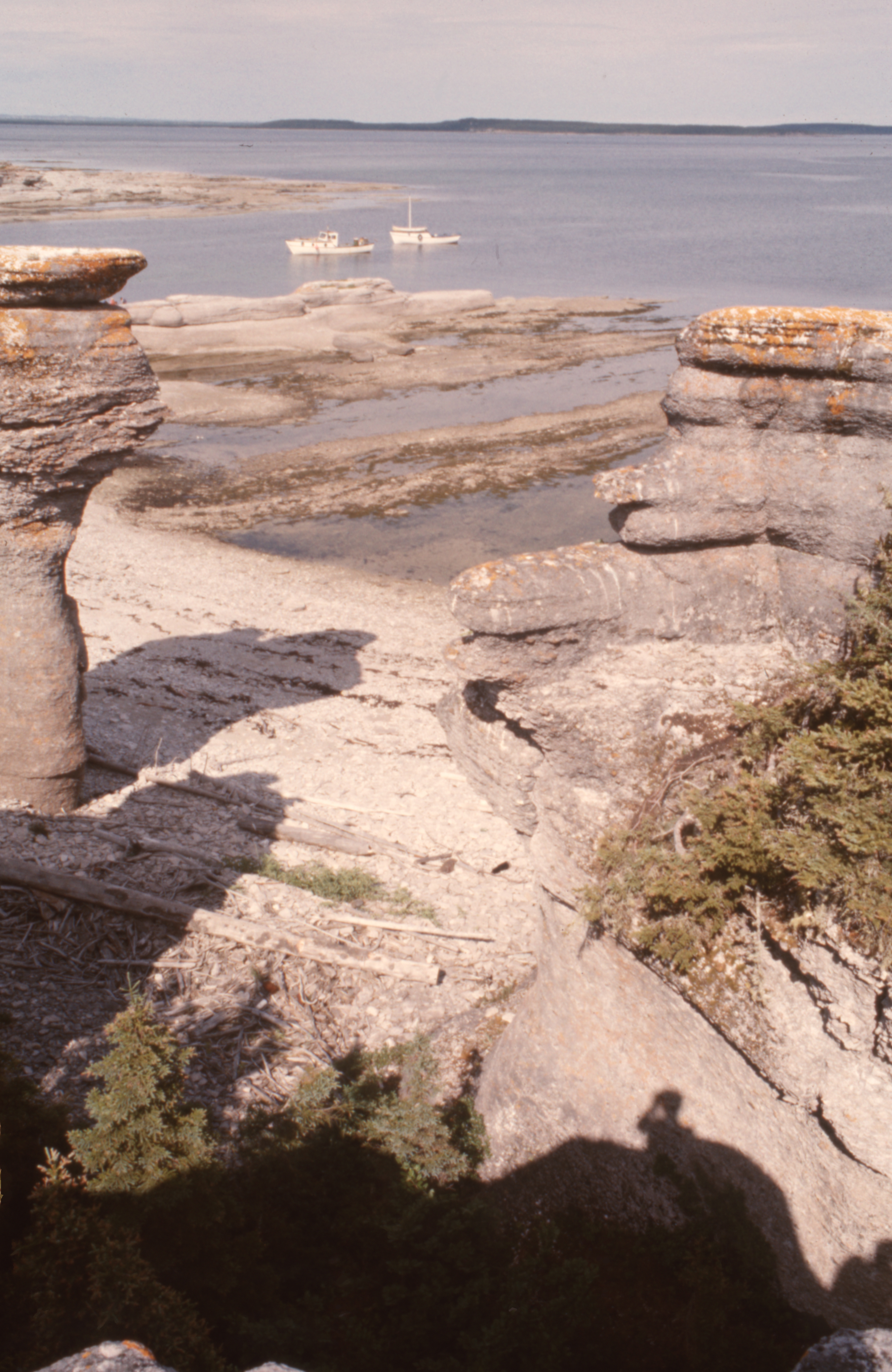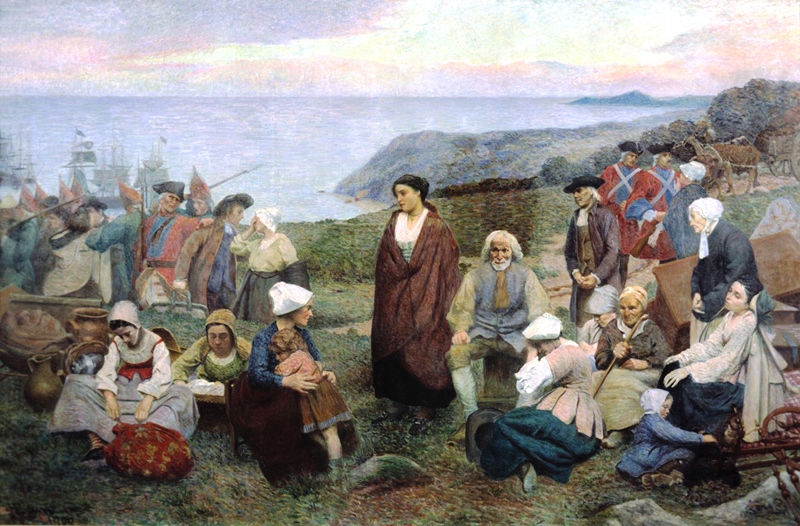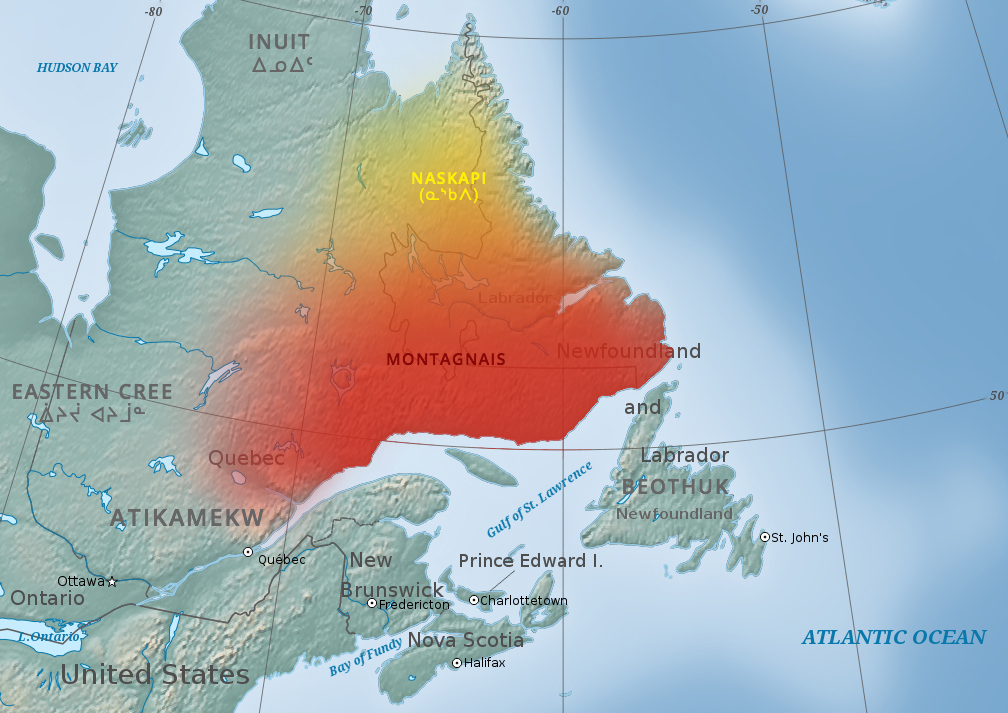|
Minganie Regional County Municipality, Quebec
Minganie () is a regional county municipality on the north shore of the Gulf of St. Lawrence, in the Côte-Nord region of Quebec, Canada. Its territory includes Anticosti Island. Toponymy Both the largest (128,473 km²) and the second least populated, the regional county municipality of Minganie extends from Labrador to the middle of the Honguedo Strait in the St. Lawrence River and includes the hinterland of Le Golfe-du-Saint-Laurent RCM and Anticosti Island. Construction workers, transport workers, miners, fishermen and trappers are also found there in larger proportions than in Quebec in general. The origins of Minganie's population can be traced to Innu, Acadian and Gaspesians pioneers and its new residents who arrived via Route 138 (The Whale Route - Route Jacques-Cartier), opened in 1976. Administration The RCM administration is seat is Havre-Saint-Pierre. It has an area of according to Quebec's ''Ministère des Affaires municipales, des Régions et de l'Occupati ... [...More Info...] [...Related Items...] OR: [Wikipedia] [Google] [Baidu] |
Regional County Municipality
The term regional county municipality or RCM (, , MRC) is used in Quebec, Canada to refer to one of 87 county-like political entities. In some older English translations they were called county regional municipality. Regional county municipalities are a supralocal type of regional municipality, and act as the local municipality in Unorganized area#Quebec, unorganized territories within their borders. The system of regional county municipalities was introduced beginning in 1979 to replace the List of former counties of Quebec, historic counties of Quebec. In most cases, the territory of an RCM corresponds to that of a Census geographic units of Canada, census division; however, there are a few exceptions. Some local municipalities are outside any regional county municipality (''hors MRC''). This includes some municipalities within Urban agglomerations in Quebec, urban agglomerations and also some aboriginal lands, such as Indian reserves that are enclaves within the territory of ... [...More Info...] [...Related Items...] OR: [Wikipedia] [Google] [Baidu] |
Hinterland
Hinterland is a German word meaning the 'land behind' a city, a port, or similar. Its use in English was first documented by the geographer George Chisholm in his ''Handbook of Commercial Geography'' (1888). Originally the term was associated with the area of a port in which materials for export and import are stored and shipped. Subsequently, the use of the word expanded to include any area under the influence of a particular human settlement. Geographic region * An area behind a coast or the shoreline of a river. Specifically, by the ''doctrine of the hinterland,'' the hinterland is the inland region lying behind a port and is claimed by the state that owns the coast. * In shipping usage, a port's hinterland is the area that it serves, both for imports and for exports. * The term is also used to refer to the area around a city or town. * More generally, ''hinterland'' can refer to the rural area economically tied to an urban catchment area. The size of a hinterland can depen ... [...More Info...] [...Related Items...] OR: [Wikipedia] [Google] [Baidu] |
2021 Canadian Census
The 2021 Canadian census was a detailed enumeration of the Canada, Canadian population with a reference date of May 11, 2021. It follows the 2016 Canadian census, which recorded a population of 35,151,728. The overall response rate was 98%, which is slightly lower than the response rate for the 2016 census. It recorded a population of 36,991,981, a 5.2% increase from 2016. It will be succeeded by 2026 Canadian census, Canada's 2026 census. Planning Consultation on census program content was from September 11 to December 8, 2017. The census was conducted by Statistics Canada, and was contactless as a result of the COVID-19 pandemic in Canada. The agency had considered delaying the census until 2022. About 900 supervisors and 31,000 field enumerators were hired to conduct the door-to-door survey of individuals and households who had not completed the census questionnaire by late May or early June. Canvassing agents wore masks and maintained a physical distance to comply with COV ... [...More Info...] [...Related Items...] OR: [Wikipedia] [Google] [Baidu] |
Statistics Canada
Statistics Canada (StatCan; ), formed in 1971, is the agency of the Government of Canada commissioned with producing statistics to help better understand Canada, its population, resources, economy, society, and culture. It is headquartered in Ottawa.Statistics Canada, 150 Tunney's Pasture Driveway Ottawa, Ontario K1A 0T6; Statistique Canada 150, promenade du pré Tunney Ottawa, Ontario K1A 0T6 The agency is led by the chief statistician of Canada, currently André Loranger, who assumed the role on an interim basis on April 1, 2024 and permanently on December 20, 2024. StatCan is accountable to Parliament through the minister of Innovation, Science and Industry, currently Mélanie Joly. Statistics Canada acts as the national statistical agency for Canada, and Statistics Canada produces statistics for all the provinces as well as the federal government. In addition to conducting about 350 active surveys on virtually all aspects of Canadian life, the '' Statistics Act'' man ... [...More Info...] [...Related Items...] OR: [Wikipedia] [Google] [Baidu] |
Ministère Des Affaires Municipales, Des Régions Et De L'Occupation Du Territoire
The Ministry of Municipal Affairs and Housing (, , abbr. MAMH) is a government ministry in the Canadian province of Quebec. It is responsible for overseeing the provincial government's relations with all Quebec municipalities, regional governments, the metropolitan communities of Montreal and Quebec City Quebec City is the capital city of the Provinces and territories of Canada, Canadian province of Quebec. As of July 2021, the city had a population of 549,459, and the Census Metropolitan Area (including surrounding communities) had a populati ..., and the regional administration of Kativik. As of the 2022 general election, the Ministry has been split between the Ministry of Housing and the Ministry of Municipal Affairs. The ministry is overseen by a member of the cabinet of Quebec. The current minister of Housing is France-Élaine Duranceau. The minister of Municipal Affairs is Andrée Laforest. The ministry is commissioned to work with the Société d'habitation du Qu� ... [...More Info...] [...Related Items...] OR: [Wikipedia] [Google] [Baidu] |
Quebec Route 138
Route 138 is a major highway in the Canadian province of Quebec, following the entire north shore of the St. Lawrence River past Montreal to the temporary eastern terminus in Kegashka on the Gulf of St. Lawrence. The western terminus is in Elgin, at the border with New York State south-west of Montreal (connecting with New York State Route 30 at the Trout River Border Crossing). Part of this highway is known as the '' Chemin du Roy'', or King's Highway, which is one of the oldest highways in Canada. It passes through the Montérégie, Montreal, Lanaudière, Mauricie, Capitale-Nationale and Côte-Nord regions of Quebec. In Montreal, Highway 138 runs via Sherbrooke Street, crosses the Pierre Le Gardeur Bridge to Charlemagne and remains a four-lane road until exiting Repentigny. This highway takes a more scenic route than the more direct Autoroute 40 between Montreal and Quebec City. It crosses the Saguenay River via a ferry which travels between Baie-Sainte-Catherine a ... [...More Info...] [...Related Items...] OR: [Wikipedia] [Google] [Baidu] |
Gaspésie–Îles-de-la-Madeleine
() is an administrative region of Quebec consisting of the Gaspé Peninsula () and the . It lies in the Gulf of Saint Lawrence at the eastern extreme of southern Quebec. The predominant economic activities are fishing, forestry and tourism. Region The administrative region of was created on December 22, 1987. It brings together two geographical units: the Gaspé Peninsula () and the Magdalen Islands archipelago (). The population was 90,311 at the time of the 2016 census. The region's interior, 80% of which is covered by coniferous forests, is among the most rugged terrain in the province. Rich soils cover the land along the coast and within the region's river valleys. Important mineral deposits are also found in this region. Forty-two local municipalities are located in the region, along with seven unorganized territories, two reserves, and one Mi'kmaq community. With the exception of a few villages, the entire population is spread out along the coast, in villag ... [...More Info...] [...Related Items...] OR: [Wikipedia] [Google] [Baidu] |
Acadians
The Acadians (; , ) are an ethnic group descended from the French colonial empire, French who settled in the New France colony of Acadia during the 17th and 18th centuries. Today, most descendants of Acadians live in either the Northern American Acadia (region), region of Acadia, where descendants of Acadians who escaped the Expulsion of the Acadians (a.k.a. The Great Upheaval / ''Le Grand Dérangement'') re-settled, or in Louisiana, where thousands of Acadians moved in the late 1700s. Descendants of the Louisiana Acadians are most commonly known as Cajuns, the anglicized term of "Acadian". Acadia was one of the five regions of New France, located in what is now Eastern Canada's The Maritimes, Maritime provinces, as well as parts of Quebec and present-day Maine to the Kennebec River. It was ethnically, geographically and administratively different from the other French colonies such as the Canada (New France), French colony of Canada. As a result, the Acadians developed a dist ... [...More Info...] [...Related Items...] OR: [Wikipedia] [Google] [Baidu] |
Innu
The Innu/Ilnu ('man, person'), formerly called Montagnais (French for ' mountain people'; ), are the Indigenous Canadians who inhabit northeastern Labrador in present-day Newfoundland and Labrador and some portions of Quebec. They refer to their traditional homeland as ''Nitassinan'' ('Our Land', ᓂᑕᔅᓯᓇᓐ) or ''Innu-assi'' ('Innu Land'). The ancestors of the modern First Nations were known to have lived on these lands as hunter-gatherers for many thousands of years. To support their seasonal hunting migrations, they created portable tents made of animal skins. Their subsistence activities were historically centred on hunting and trapping caribou, moose, deer, and small game. Their language, which changed over time from Old Montagnais to Innu-aimun (popularly known since the French colonial era as Montagnais), is spoken throughout Nitassinan, with certain dialect differences. It is part of the Cree–Montagnais– Naskapi dialect continuum, and is unrelated to ... [...More Info...] [...Related Items...] OR: [Wikipedia] [Google] [Baidu] |
Trapping
Animal trapping, or simply trapping or ginning, is the use of a device to remotely catch and often kill an animal. Animals may be trapped for a variety of purposes, including for meat, fur trade, fur/feathers, sport hunting, pest control, and wildlife management. History Neolithic hunters, including the members of the Cucuteni-Trypillian culture of Romania and Ukraine (), used traps to capture their prey. An early mention in written form is a passage from the self-titled book by Taoism, Taoist philosopher Zhuangzi (book), Zhuangzi which describes Chinese methods used for trapping animals during the 4th century BCE. The Zhuangzi reads: "The sleek-furred fox and the elegantly spotted leopard ... can't seem to escape the disaster of nets and traps." "Modern" steel jaw-traps were first described in western sources as early as the late 16th century. The first mention comes from Leonard Mascall's book on animal trapping. It reads: "a griping trappe made all of yrne, the lowest b ... [...More Info...] [...Related Items...] OR: [Wikipedia] [Google] [Baidu] |
Fisherman
A fisherman or fisher is someone who captures fish and other animals from a body of water, or gathers shellfish. Worldwide, there are about 38 million Commercial fishing, commercial and Artisan fishing, subsistence fishers and Fish farming, fish farmers. Fishermen may be professional or Recreational fishing, recreational. Fishing has existed as a means of obtaining food since the Mesolithic period.Early humans followed the coast BBC News articles History  Fishing has existed as a means of obtaining food since the Mesolithic period. Fishing had become a major means of sur ...
Fishing has existed as a means of obtaining food since the Mesolithic period. Fishing had become a major means of sur ...
[...More Info...] [...Related Items...] OR: [Wikipedia] [Google] [Baidu] |
Miner
A miner is a person who extracts ore, coal, chalk, clay, or other minerals from the earth through mining. There are two senses in which the term is used. In its narrowest sense, a miner is someone who works at the rock face (mining), face; cutting, blasting, or otherwise working and removing the rock. In a broader sense, a "miner" is anyone working within a mine, not just a worker at the rock face. Renowned as one of the most dangerous jobs in the world - and for good reason. Cave-in, Cave-ins, Explosion, explosions, Firedamp, toxic air, and extreme temperatures are some of the most perilous Mining accident, hazards observed to take place in underground mining, as well as the Health and environmental impact of the coal industry, overall long-term health effects of underground mining conditions. In some countries, miners lack social guarantees and in case of injury may be left to cope without assistance. In regions with a long mining tradition, many communities have developed cu ... [...More Info...] [...Related Items...] OR: [Wikipedia] [Google] [Baidu] |




